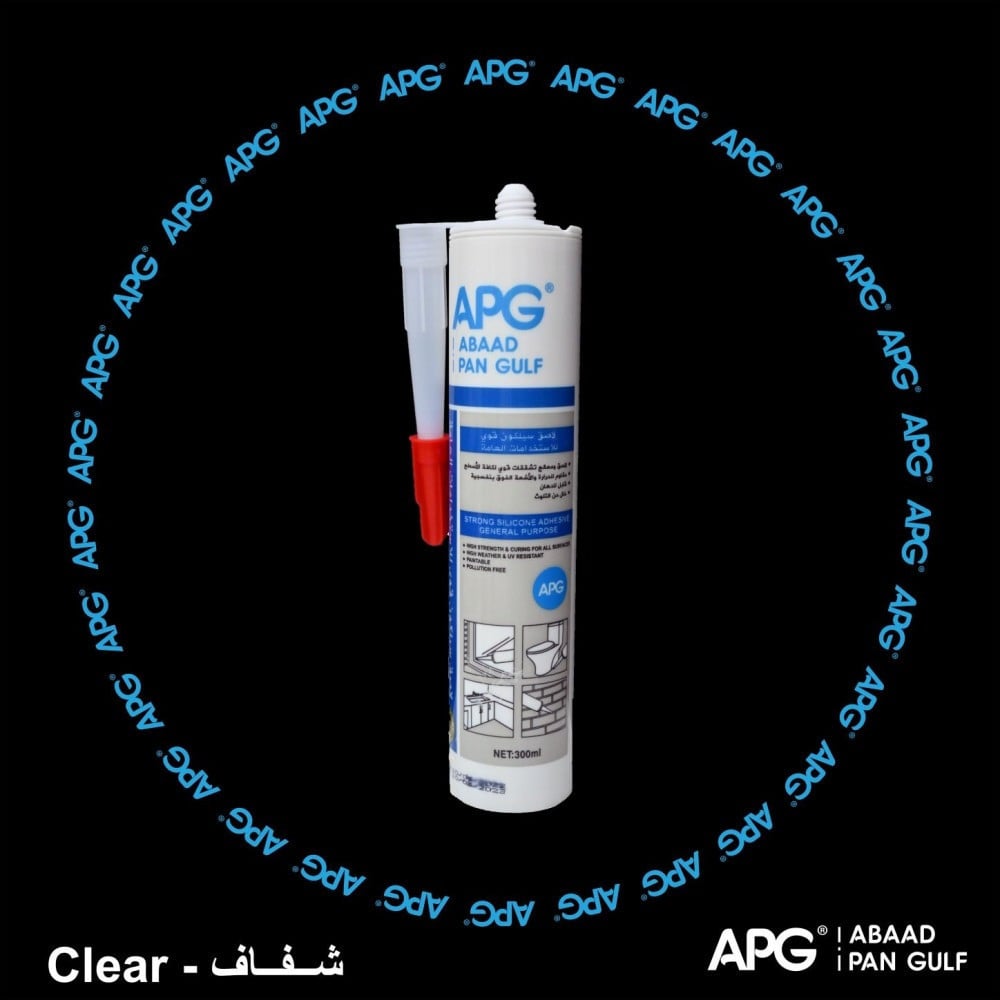The most important types of sealants
Do you need installation or sealant materials? Looking for the best silicone adhesive ? Or do you need an acrylic sealant for kitchen or bathroom walls? Ab’ad Across the Gulf Company provides the best materials with the highest quality and best price, but let’s first get to know these materials and which product is right for you.
Silicone sealants, acrylic putty , silicone gum , white and clear glue, are generally single-component sealants of synthetic origin, characterized primarily by their flexibility, weather resistance and therefore long life, reacting by polymerizing a crosslinking agent, as well as by absorbing moisture present in the air.
However, due to the silicone oil used, it cannot be used on natural stone, as this oil will spread into the stone and may cause discoloration. Special silicone terms designed for natural stone must be used in this case. Most silicones cannot be painted.
So you should pay attention to the product you choose for the areas that need to be painted next, as the cross-linking agents used vary depending on the application.
The raw material is pure silicon obtained from quartz with methyl chloride, and requires little or no solvent. It can be neutral silicon, vinegar or water.
Vinegar silicone glue polymerizes when acetic acid hardens and can be identified by its distinctive vinegar smell.
They are ideal for glass surfaces and give silicone glues and neutral adhesives a fairly neutral odour by curing and are also suitable for acid sensitive substrates.
Benefits of silicone glue:
-Ease of implementation
-High movement capacity (+/- 25%)
-Insensitive to climate conditions
-Presence of white or transparent color
-Adhesive without primer on most substrates
-Especially suitable for porous materials.
-Insensitive to temperature changes
-Insensitive to temperature changes and UV
Disadvantages of silicone glue
-Sensitivity to frost or rain before complete drying
-Not suitable for joints exposed to stagnation or immersion in water.
-Application is not recommended on wet substrate (except water base)
-Sensitivity to staining of certain sensitive materials (natural stones, some mirrors)
Application areas of silicone adhesive:
-Peripheral joints between carpentry and construction.
-Expansion joints between concrete members as well as many other common supports of the building.
-Elements exposed to direct water flow.
-Tile/wall connection, built-in kitchen and bathroom, cold rooms…..
The application areas are so diverse and varied that APG silicone glues and adhesives are designed to meet some specific applications.
Potential problems with silicone
Yellowing of silicone over time, the main causes are:
-Lack of ultraviolet rays, especially in the days following installation.
-Presence of volatile chemical vapors that cause a chemical reaction on site during installation and complete drying.
-Laying floor coverings with neoprene glue, or painting work for example.
-Presence of an open fireplace and/or smoke.
-Using some cleaning products that cause the silicone components to react.
-Presence of nicotine on the fingers when smoothing with the hand.
Acrylic finishing putty
Acrylic finishing putty is made of acrylic resins in aqueous dispersion, acrylic putty requires water as a solvent, and it is the evaporation of water that causes the sealant putty to harden.
The word is derived from the Latin "acer" (sour) or Greek "ákros' (sharp), because of the pungent odor of acrylic acid.
Acrylic sealant is particularly used in the form of an acrylic sealing block used to fill and seal expansion joints or cracks (gaskets). Unlike silicone, acrylic is odorless and can be painted. Multiple layers can also be applied.
However, acrylic is less viscous and less flexible than silicone and is only partially water repellent, so silicone sealant is preferred in wet rooms such as the kitchen and bathroom.
Benefits of acrylic putty:
-Ease of implementation
-Good adhesion to surfaces, even on wet surfaces.
-Easy smoothing
-Compatible with most paints
-odorless
Disadvantages of acrylic putty:
Sensitivity to frost or rain before complete drying
Not joints exposed to stagnation or immersion in water
Exterior drawing required
Used on:
Concrete and cellular concrete.
-Construction, plasterboard, wood and aluminum.
- Recommended use for internal joints and cracks indoors and outdoors.
Application areas: Almost comprehensive bonding spectrum for use on most materials encountered in construction and industry. Also suitable for bonding decorative and solvent boards, bonding building materials, repairing cracks, connecting,
Repairing cracks, jointing, gluing and finishing of fitted kitchens, joints, gluing of floor and zinc utensils, as well as in the field of automobiles and industrial work structure, etc.

